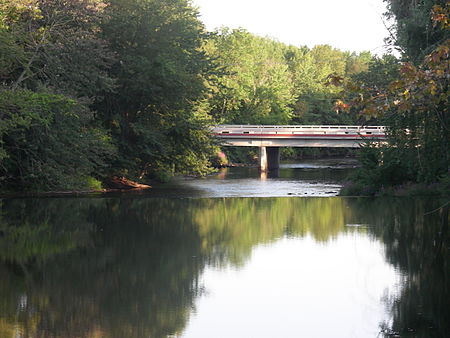Battle Creek River

The Battle Creek River (simply Battle Creek on federal maps) is a river in the U.S. state of Michigan. It is a tributary of the Kalamazoo River, joining it at Battle Creek, Michigan; the Kalamazoo River empties into Lake Michigan. The river's drainage basin is approximately 196,750 acres (796.2 km2) and covers northern Calhoun County, southern Eaton County, and southeastern Barry County in southwest Michigan. The headwaters of the Battle Creek River are at Duck Lake in Clarence Township in northeast Calhoun County, and the stream flows north to the city of Charlotte, then southwest through the village of Bellevue and empties into the Kalamazoo River at the city of Battle Creek. Tributaries of the Battle Creek River include Wanadoga Creek, Ellis Creek, Crooked Brook, Goose Creek, Ackley Creek, Indian Creek, and Big Creek. The river is 53.3 miles (85.8 km) long with an average gradient of 1.25 feet/mile.
Excerpt from the Wikipedia article Battle Creek River (License: CC BY-SA 3.0, Authors, Images).Battle Creek River
West Hamblin Avenue, Battle Creek
Geographical coordinates (GPS) Address Nearby Places Show on map
Geographical coordinates (GPS)
| Latitude | Longitude |
|---|---|
| N 42.32254 ° | E -85.193881 ° |
Address
West Hamblin Avenue 214
49037 Battle Creek
Michigan, United States
Open on Google Maps








